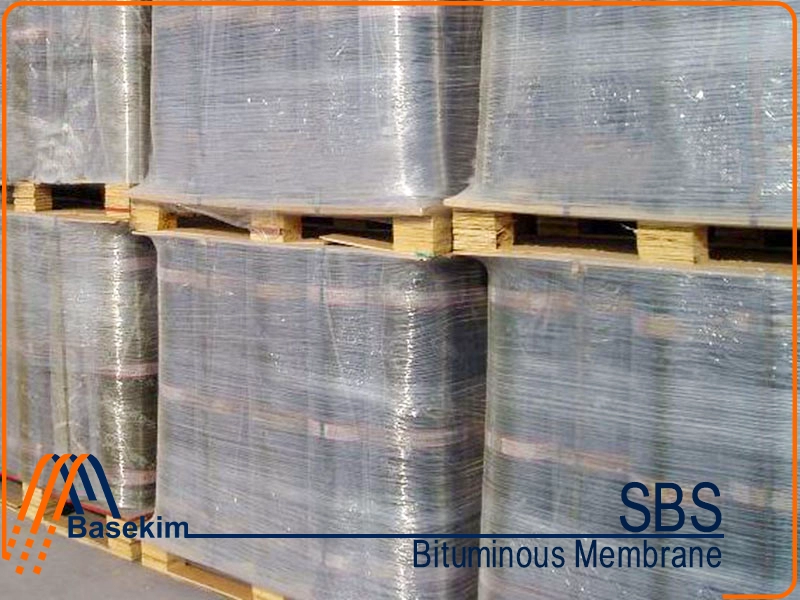
SBS bitumen membrane
- Home
- SBS bitumen membrane

What is SBS bitumen membrane?
SBS bituminous membrane is a type of roofing or waterproofing material that is commonly used in the construction industry. This Product is made up of a base layer of modified bitumen that is reinforced with a polyester or fiberglass mat, and then coated with a layer of SBS rubber on the top and bottom. This provides the membrane with excellent flexibility, durability, and resistance to temperature changes.
Contractors install membranes as roofing material on flat or low-slope roofs and in below-grade waterproofing applications like basements and foundation walls. Furthermore, they apply the membrane as flashing around roof penetrations, including vents and chimneys.
One of the benefits of SBS bitumen membrane is its ability to adapt to different weather conditions and temperature changes. It can also withstand heavy foot traffic and exposure to UV radiation without deteriorating or cracking. This product is also resistant to water, making it an ideal material for waterproofing applications.
Table of Contents
ToggleBenefit of high quality SBS bitumen membrane roofing
- Flexibility: SBS bitumen membrane is highly flexible and can easily conform to the shape of the roof or surface it is applied to. This makes it an ideal material for use on roofs with complex shapes or structures.
- Durability: This Product is extremely durable and can withstand harsh weather conditions, including extreme heat and cold. It is also resistant to UV radiation and can last for many years without deteriorating.
- Waterproofing: bituminous waterproofing Membrane actively waterproofs and stops water from penetrating roofs or any surface you apply it to. Additionally, it protects the underlying structure from water damage and extends its lifespan.
- Energy efficiency: SBS bituminous membrane is available in different colors and finishes, including reflective options that can help to reduce energy consumption by reflecting heat away from the building.
- Ease of maintenance: You maintain this product easily, and furthermore, you repair or patch it quickly when damage or wear and tear occur.
Price of bitumen SBS membrane
SBS Bitumen membrane price is depend on type of SBS modified bituminous and origin plus wall thickness of the material and weight per M2 also packing and outside and inside material.
Base on today price of bitumen and raw material bitumen SBS membrane roof roll waterproofing sheet FOB price is :
1MM WT 0.7USD/M2
2MM WT 1.2USD/M2
3MM WT 1.9USD/M2
4MM WT 2.5USD/M2
Packing and dimension of SBS Bitumen membrane roof roll sheet
1MM WT 15000M2 per 20ft container
2MM WT 10000M2 per 20ft container
3MM WT 6500M2 per 20ft container
4MM WT 5000M2 per 20ft container
Top side of roof membrane could be
- Aluminium foil
- Granule 3 color
- Sand 3 color
Bitumen membrane usage
Engineers typically incorporate SBS styrene butadiene styrene Bitumen membranes into single or multi-layer waterproofing systems. Furthermore, they install these membranes on accessible or inaccessible concrete roofs, balconies, wet areas, foundations and footings, below-grade structures, swimming pools, tunnels, and any smooth concrete surface that demands flexible waterproofing. Moreover, professionals apply bitumen membranes solely for covered applications.
Application of SBS membrane
Begin by ensuring you have a clean, dry, firm, even surface without any imperfections. Next, apply a coat of solvent-based primer to the prepared surface and let it dry. Then, bond SBS Bitumen membranes to the surface by torching them directly with propane or butane gas. Start at the lowest point of the roof and form overlaps to shed water effectively. Additionally, avoid excessive heating since it may damage the reinforcement. Finally, stagger the overlaps of adjacent rolls.
Ensure you maintain a minimum of 5cm for side laps and 10cm for end laps. First, prepare details such as corners, edges, and joints by torching them and fixing strips of primer in place. Then, dress the overlaps with a hand trowel to achieve perfect bonding without any openings.
Other Types
Share On
Contact Info
Turkey office:No.6 of Fahrettin Pasa Sokak , Galip Erdem steet, Ilkbahar Mah. Turan Gunes Ave. Çankaya Ankara
Phone: 00903125147055
Dubai office: 3509 of the Burligton tower, business bay, dubai-uae
Phone:0097142369830
E-Mail: [email protected]
